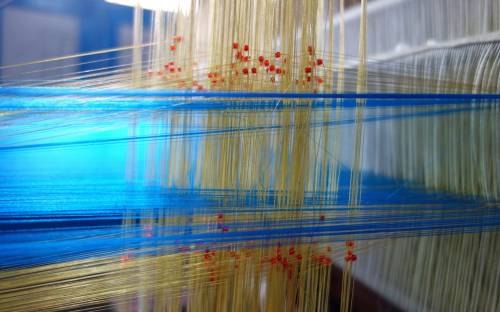As technological innovation battles geopolitical headwinds, C-suite executives worldwide are grappling with unprecedented challenges while trying not to overlook the extraordinary opportunities they bring. Amid the clamor of competing strategies and solutions, we advise paying close attention to the inexorable rise of the bioeconomy.
Bio-based breakthroughs could rise to humanity’s most pressing challenges, such as climate change, sustainability, and food and water security. Moreover, biologics offer the possibility of powerful diagnostics and curative medicines. The pioneering work that underlies the growth of the bioeconomy embraces the fields of synthetic biology, biotechnology, bioengineering, and bioinnovation. Whichever identifier the industry eventually aligns itself with, the exciting intersection of biology, engineering, and advanced computation is driving a revolution – and it is already upon us.
“Bio-based breakthroughs could rise to humanity’s most pressing challenges, such as climate change, sustainability, and food and water security.”
Existing industries will be entirely replaced by new ones. New, unexpected partnerships will spring up. Global supply chains will be completely reconfigured. More of these themes in a moment; for now, let’s remind ourselves of the formidable power of this new field of innovation. Biology, as a scientific discipline, concerns the very essence of life. A tiny seed contains all the biological information necessary to harvest water and nutrients from soil, CO2 from the atmosphere, and energy from the sun, eventually producing a fully mature tree.
For centuries, humans have attempted to harness the power of biology. Long before the discovery of DNA, scientist and mathematician Gregor Mendel (1822‒84) successfully selectively bred peas based on their observable traits. Since its discovery in 1928, penicillin, a naturally occurring fungus, has become an effective treatment for the bacterial infections that had claimed the lives of so many.
However, the past few decades have seen a rapid acceleration of our understanding of biology, and of our corresponding capacity to engineer and exploit this new technology to tackle a vast array of challenges and opportunities. From the discovery of DNA and genetics, we have developed a profound knowledge of cell and organism behavior.
The next step in bioengineering
The biological behaviors we observe and seek to exploit function through cells, tissues, organs, and even whole organisms. To decode and manipulate biology effectively at this level, precise measurements and observations are imperative. The emergence of sophisticated measurement techniques, such as single-cell sequencing, spatial transcriptomics, proteomics, and metabolomics is transforming our biological engineering capabilities.
Huge datasets of immense complexity, previously unusable owing to the limitations of human workforces, are being unlocked by advances in artificial intelligence (AI) and machine learning (ML), revealing hitherto hidden insights. Google’s AlphaFold 2 technology, for instance, has the ability to predict the 3D structure of a protein directly from its amino acid sequence. Structure is fundamental to understanding the mechanistic function of a protein, so this is a technological leap that will greatly facilitate and accelerate research.
Why is this important? The manner in which a protein folds is based on its sequence. The function of a protein is directly related to its folding, with the function’s dynamic ranging from completely non-active, to different shades of activity, to very active. Understanding the activity based on protein sequence and folding will enable the engineering of proteins that will be super functional for medical purposes (such as diseases with a protein deficiency) or in industrial biotech where processes are reliant on enzyme activity.
These new AI tools are driving new capacity to create enhanced medicines and biobased manufacturing systems from renewable natural sources. Benefits could include more active medications with reduced dosage, which would be particularly beneficial to therapeutics that have severe secondary effects. The benefits of biobased manufacturing include the reduction in costs of the bioprocess as a direct effect of the enhanced enzymes deployed in the process.
The pivot towards the bioeconomy is already under way. From the incredible amount of current activity, below is just a selection of cross-industry examples that harness the power of biology.
Perfect Day is in the cow’s milk business. Without cows. The company has figured out how to modify a naturally occurring fungus that contains the genetic machinery required to produce beta-lactoglobulin (a type of whey protein), at scale. It has done this not just because it can, but in response to soaring consumer demand. Less land, less water, less energy, less waste, less methane. Technologies like this, deployed at scale, can help address climate change, sustainability, and food security.
“LanzaTech uses carbon emissions to feed trillions of carbon-hungry microbes that turn pollution into valuable raw-material commodities.”
LanzaTech uses carbon emissions to feed trillions of carbon-hungry microbes that turn pollution into valuable raw-material commodities. The firm has partnered with Unilever in manufacturing laundry detergent from the CO2 emissions of a Chinese steel mill.
Vertex and CRISPR Therapeutics are tackling sickle cell disease, a debilitating inherited blood disorder that affects millions globally, predominantly those of African descent. Conventional management of the disease requires frequent blood transfusions. Now, new treatments are showing tremendous promise25 in first clinical use. By using gene-editing techniques to enable the patient’s own cells to produce fetal hemoglobin, the treatment allows patients to remain transfusion-independent for up to 26 months.
As part of the trend in the production of bio-based materials that take advantage of local feedstocks, Solugen is using synthetic biological tools to create chemicals for water treatment and molecules to harden cement. Sugar replaces fossil fuels but, rather than fermentation, which converts half the sugar to CO2, engineers utilize synthetically engineered enzymes. This dramatically increases efficiency and reduces costs, leaving a zero-carbon footprint.
Massive data storage and computation
A crucial driver of much of this bio-based innovation and technological progress is the convergence of biology, engineering, and advanced computation. In one example, CATALOG Technologies is trying to build the world’s first DNA-based platform for extensive digital data storage and computation. In the newly digitized world, humanity has an unlimited appetite for data storage. Conventional data storage using optical or magnetic media lacks the longevity, data density, and cost-effectiveness to meet global demand, while datacenters can consume as much power as a city. A landmark in this initiative to address the data-sustainability challenge came in July 2019 when CATALOG’s “terabit machine” encoded the whole of the English language Wikipedia into DNA.
One of the most exciting and transformative areas of medicine is the cell and gene therapy space. The highly sophisticated manufacturing process is currently hindered by labor-intensive manual procedures that require constant monitoring. This, in turn, drives the exorbitant costs of the therapies: around $500,000 or more per dose. One of the technologies that Cambridge has created in response to this issue is a fully automated in-line contamination-detection system. Once a development partner is in place, this scalable technology can make a big impact on the market through delivering significant time and cost savings – and improving patient outcomes.
The potential of these “living medicines” is, without doubt, awe-inspiring. We are developing the knowledge and ability to engineer cells to recognize and respond to specific diseases. These will patrol the body in a latent state, springing into preprogrammed action only when they detect certain triggers.
Another possibility on the horizon is the application of genetic logic-gate circuits. One use case for this is that a crop could be engineered to sense and assess its own environment and then use that information to optimize its own growth rate. We can see a future where we engineer cells from scratch, taking cell therapies to the next level. Another exciting possibility is that of writing and recording genetic code into the genome, allowing monitoring of diseases and, in microbial systems, environmental conditions.
“A crop could be engineered to sense and assess its own environment and then use that information to optimize its own growth rate.”
There is still an unquantifiable amount of work to be done and countless hours of debate around the ethical and moral questions, as business and society adjust to this new world. As advocates of the emerging bioeconomy, however, we firmly believe that humanity has much to gain from embracing the biological revolution.














































